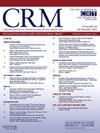Percutaneous endovascular intervention for left ventricular assist device outflow graft obstruction: A single-center experience
IF 1.6
Q3 CARDIAC & CARDIOVASCULAR SYSTEMS
引用次数: 0
Abstract
Background
Outflow graft obstruction (OGO) is an uncommon yet life-threatening complication in patients with left ventricular assist devices (LVADs). In this retrospective, single-center case series, we identify the baseline demographics and presenting features of patients who develop LVAD OGO and the procedural details and outcomes surrounding percutaneous endovascular intervention (PEI).
Methods
We conducted a retrospective review of patients with LVADs at our institution between January 2010 and February 2023 who developed OGO and were treated with PEI. Details of the PEI including procedure time, fluoroscopy time, contrast use, stent size, number of stents, change in gradient, and change in flow after intervention were collected.
Results
A total of 12 patients who had 14 cases of OGO were identified from January 2010 to February 2023. The average age at presentation was 64.78 years. Nine of the 14 cases occurred in male patients. Eleven of the 14 cases occurred with Heartware devices (2 recurrences), 2 in Heartmate 2 and 1 in Heartmate 3. Notable procedural details include a mean procedure time of 90.86 min and mean contrast use of 162.5 mL. The initial gradient across the OGO was reduced by an average of 72 %, to a mean post-PEI of 11.57 mmHg. The average number of stents to achieve this gradient was around 2.08, with the most common stent diameter being 10 mm. Thirty-day mortality after PEI was 7 % (1/14) in this high-risk patient population.
Conclusion
In our single-center experience, PEI can be a safe and effective treatment for LVAD OGO.

经皮血管内介入治疗左心室辅助装置流出管道阻塞:单中心经验
背景:在使用左心室辅助装置(lvad)的患者中,流出性移植物梗阻(OGO)是一种罕见但危及生命的并发症。在这个回顾性的单中心病例系列中,我们确定了LVAD OGO患者的基线人口统计学特征和表现特征,以及经皮血管内介入治疗(PEI)的手术细节和结果。方法:我们对2010年1月至2023年2月在我院进行的lvad患者进行回顾性分析,这些患者发生OGO并接受PEI治疗。收集PEI的详细信息,包括手术时间、透视时间、造影剂使用、支架尺寸、支架数量、梯度变化、介入后血流变化。结果2010年1月至2023年2月共收治12例OGO患者,其中OGO 14例。平均发病年龄为64.78岁。14例中有9例为男性患者。14例中有11例使用了Heartware装置(2例复发),2例发生在Heartmate 2, 1例发生在Heartmate 3。值得注意的手术细节包括平均手术时间为90.86分钟,平均造影剂用量为162.5 mL。整个OGO的初始梯度平均减少72%,pei后平均为11.57 mmHg。达到这一梯度的平均支架数约为2.08个,最常见的支架直径为10 mm。在该高危患者人群中,PEI术后30天死亡率为7%(1/14)。结论在我们的单中心经验中,PEI可以安全有效地治疗LVAD OGO。
本文章由计算机程序翻译,如有差异,请以英文原文为准。
求助全文
约1分钟内获得全文
求助全文
来源期刊

Cardiovascular Revascularization Medicine
CARDIAC & CARDIOVASCULAR SYSTEMS-
CiteScore
3.30
自引率
5.90%
发文量
687
审稿时长
36 days
期刊介绍:
Cardiovascular Revascularization Medicine (CRM) is an international and multidisciplinary journal that publishes original laboratory and clinical investigations related to revascularization therapies in cardiovascular medicine. Cardiovascular Revascularization Medicine publishes articles related to preclinical work and molecular interventions, including angiogenesis, cell therapy, pharmacological interventions, restenosis management, and prevention, including experiments conducted in human subjects, in laboratory animals, and in vitro. Specific areas of interest include percutaneous angioplasty in coronary and peripheral arteries, intervention in structural heart disease, cardiovascular surgery, etc.
 求助内容:
求助内容: 应助结果提醒方式:
应助结果提醒方式:


